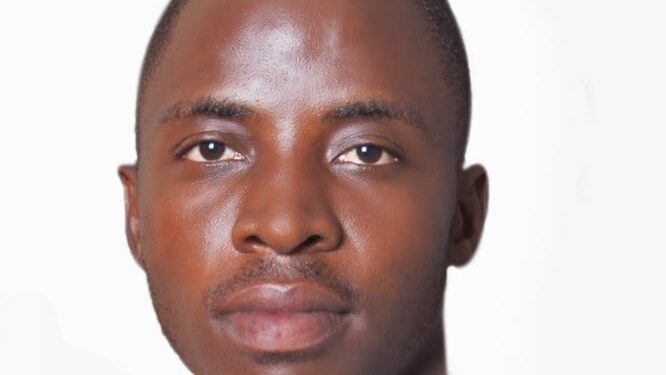Polio also called poliomyelitis in full, is a virus that may cause paralysis and is easily preventable by the polio vaccine. Polio is transmitted through contaminated water, food, or contact with an infected person.
Poliomyelitis, also called infantile paralysis, acute viral infectious disease of the nervous system that usually begins with general symptoms such as fever, headache, nausea, fatigue, and muscle pains and spasms and is sometimes followed by a more-serious and permanent paralysis of muscles in one or more limbs, the throat, or the chest.
More than half of all cases of polio occur in children under the age of five. The paralysis so commonly associated with the disease actually affects fewer than one percent of persons infected by the poliovirus. Between five and ten percent of infected persons display only the general symptoms outlined above, and more than 90 percent show no signs of illness at all. For those infected by the poliovirus, there is no cure, and in the mid-20th century hundreds of thousands of children were struck by the disease every year.
Since the 1960s, thanks to widespread use of polio vaccines, polio has been eliminated from most of the world. It is now endemic in only three countries: Afghanistan, Pakistan, and Nigeria. Nigeria, however, was on the brink of being polio-free in 2015. Worldwide, since 1988 the number of reported polio cases has dropped by more than 99 percent.
There are three known serotypes, closely related though distinguishable forms of wild poliovirus: PV1, PV2, and PV3. The most-widespread serotype is PV1. PV2 likely has been eradicated; the last PV2 case was reported in 1999 in Uttar Pradesh, India. The third serotype, PV3, is close to eradication.
Poliomyelitis means “gray marrow inflammation,” referring to the propensity of the poliovirus to attack certain cells in the spinal cord and brainstem. The poliovirus is a picornavirus, a member of a group known as enteroviruses that inhabits the human digestive tract. (Human beings are the only known hosts of the poliovirus.)
The virus enters the body most often by the so-called fecal–oral route—that is, from fecal matter taken into the mouth through contaminated food or fingers. It can also enter by ingestion of droplets expelled from the throat of an infected person. New victims may become ill about 7 to 14 days after ingesting the virus. Infected persons may shed the virus from their throats for a week, beginning a day or more before suffering any symptoms themselves, and they may continue to shed the virus in their feces for a month or more after their illness.
After the poliovirus is swallowed, it multiplies in lymph nodes of the intestinal tract and spreads through the body via the bloodstream. In some people the virus gets no farther, causing only a vague flulike illness to develop.
The most-common early symptoms of polio are mild headache, fever, sore throat, nausea, vomiting, diarrhea, restlessness, and drowsiness. Fever peaks in two to three days and then rapidly subsides, and patients recover within three to four days without the development of paralysis.
In some cases, however, the virus begins an assault on the central nervous system, inflaming and destroying motor cells of the spinal cord and brainstem. In those cases patients become irritable and develop pain in the back and limbs, muscle tenderness, and stiff neck. Many recover at that stage, but approximately 1 in 200 persons with polio develops what is known as flaccid paralysis. The motor impulses that normally moves along the nerve fibres from the spinal cord to muscles are blocked, and, as a result, muscles become limp and cannot contract.
The extent of paralysis depends on where the virus strikes and the number of nerve cells that it destroys. Cells that are not severely injured recover their normal function in time; to the extent that they do recover, a corresponding restoration of muscle function may be expected. Cells that are destroyed, however, are not replaced, because nerve cells cannot regenerate. In that case the paralysis is complete and permanent, with associated progressive atrophy of the unused muscles.
In most cases paralytic polio strikes the limb muscles, particularly the legs. Paralysis does not always involve the limbs, however. The abdominal muscles or the muscles of the back may be paralyzed, affecting posture. The neck muscles may become weak, so that the head cannot be raised. Paralysis of the face muscles may cause twisting of the mouth or drooping eyelids. In some types of spinal polio, the virus damages the upper part of the spinal cord, with resulting difficulties in breathing.
In bulbar polio the virus attacks the brainstem, and the nerve centres that control swallowing and talking are damaged. Secretions collect in the throat and may lead to suffocation by blocking the airway. Some 5 to 10 percent of persons afflicted with paralytic polio die, usually of respiratory complications.
There seem to be individual differences in the degree of natural susceptibility to the disease. Many persons have acquired antibodies to the poliovirus in their blood without having had any symptoms of infection. It is generally held that a lasting immunity follows recovery from the disease. However, because there are three different serotypes of poliovirus, second attacks can occur. Persons who recover from an infection caused by one serotype of poliovirus are permanently immune to reinfection by that serotype but not to infection by the others.
For that above reason, polio vaccines are trivalent, designed to generate antibodies to all three poliovirus serotypes.
Among as many as one-quarter of former polio victims whose condition has been stabilized for years or even decades, a condition called post-polio syndrome has been recognized. Post-polio syndrome manifests itself as increased weakness, muscle atrophy, or other conditions involving the originally affected muscle groups or a different group of muscles.
The cause of the syndrome is not known for certain, but it may arise when nerve branches grown by nerve fibres that survived the original infection begin to deteriorate as the former polio victim passes through middle age. Ugandans should be aware that there is no cure for post-polio syndrome.
Last year, in a statement released by Dr. Henry Mwebesa, the Director General of Health services at the ministry of Health, the virus sequencing test done in south Africa on the two samples showed that the confirmed circulating vaccine derived polio virus is linked to a circulating CVDPV2 lineage in Sudan. The results confirmed a circulating vaccine derived polio virus type 2 in Uganda.
It should be remembered that Uganda was declared free of all polio viruses in 2006 but, Dr. Mwebesa noted, that the country has been under threat of importations of the virus from other countries where polio is endemic.
According to him, more than nineteen African countries declared CVDPV2 outbreak in the last twelve months, and among them Democratic Republic of Congo, Kenya and south Sudan, of which are border states of Uganda.
On 21st July 2021, Uganda confirmed polio viruses from two samples collected on the 1st June 2021 from the sewage plants in Bugolobi and Lubigi which are two of the Sentinel environment surveillance site in Kampala.
Today the Ugandan Health ministry is running a national house to house polio immunization campaign, launched yesterday 13 January 2022 in Wakiso District.
It is very safe to administer multiple doses of the oral vaccine to children. The vaccine is designed to be administered multiple times to ensure full protection.
Every child below the age of five years is at risk of contracting polio if they happen not to be vaccinated against polio.
Therefore all children under the age of five years should be vaccinated.
#keepingUgandaPolioFree
For God and my Country.
Lukanga Samuel
lukangasamuel55@gmail.com
+256 785717379
The writer is a social development enthusiast and a judicious youth leader from Nakaseke District.
Do you have a story in your community or an opinion to share with us: Email us at editorial@watchdoguganda.com













